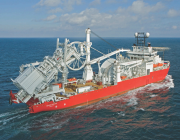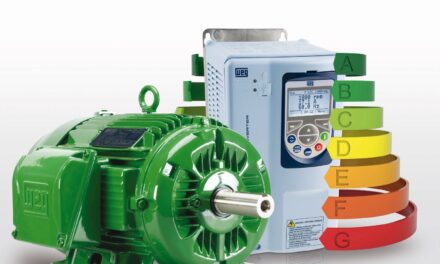Analysis of marine electric motors and generators by SKF Electric Motor Condition Monitoring Services is helping a leading offshore engineering services provider optimise the performance and reliability of its rotating equipment.
Subsea 7 is a world-leading seabed-to-surface engineering, construction and services contractor to the offshore energy industry. Subsea 7 undertakes some of the most technically demanding offshore engineering work in the world. The company’s operations include installing and maintaining the umbilicals, risers and flowlines that connect oil and gas wells to floating production platforms. That can involve working to tight timescales in water depths of up to 3,000m, with arduous sea and weather conditions.
The work calls for highly specialised assets too. Subsea 7 operates some of the most modern and advanced offshore service vessels and remotely operated vehicles (ROVs) in the world. Its fleet of more than 30 vessels includes high-performing pipe laying and heavy construction vessels and versatile support ships for construction, diving and remote intervention activities.
Operating in such harsh environments places a premium on the reliability of those vessels and their equipment. Failure of a critical asset while at sea could jeopardise the vessel schedules. At the same time, the company needs to keep the time required for planned maintenance and overhaul activities tightly under control, so its assets can spend more of their time working on projects for its customers around the world.
In its continual efforts to maximise performance, Subsea 7 is moving from time-based overhauls to a condition-based maintenance strategy for a number of critical assets in its fleet. By monitoring the behaviour and performance of equipment, the company’s engineers aim to ensure that equipment overhaul and replacement activities are carried out at the optimal frequency, maximising vessel performance and availability.
As part of this new strategy, Subsea 7 is now conducting regular static testing on a number of critical electrical machines in its fleet. Those assets include the generators and thruster motors used to keep vessels in the correct position over the work site. The electrical testing services are provided by SKF, using the SKF Static Motor AnalyzerBaker AWA-IV.
The SKF Static Motor Analyzer Baker AWA-IV performs tests on motors while in a static, or powered-down state. Static electrical testing can provide early warning of developing issues in electrical machines, allowing timely intervention before problems occur, minimising impact on operations and vessel availability. Among other things, the technique can be used to identify corroded or loose connections, contamination and water ingress, or winding and ground-wall insulation weaknesses that could reduce efficiency, impair performance or lead to premature motor failure.
A sequence of tests is conducted to analyse the winding circuit, and the dielectric strength of the insulation between windings and earth, as well as turn-to-turn and between phases. For example, studies have shown that 80 per cent of the electrical failures in motors begin with a failure of the thin insulation around individual wires in their coils. As this insulation degrades, the inrush of voltage during motor starting and stopping can cause arcing, further degrading the insulation and creating a conductive carbon path that will eventually lead to a short circuit and complete failure. A special test known as a surge test is used to detect weak turn-to-turn insulation before a short occurs.
Testing at Subsea 7 is conducted while vessels are docked for other scheduled maintenance activities. The generators installed on vessels can contain up to five separate windings, and each undergoes a comprehensive series of tests to determine the overall health of the machine.
Subsea 7 and SKF have collaborated to design and tailor the service and solution to deliver the maximum value to their operations during tight overhaul schedules. This includes documented preparation instructions and a review of the equipment profile and test procedures in advance of each planned overhaul.

Any early identification of a pending issue or deterioration in equipment performance allows Subsea 7 to intervene during the scheduled maintenance period to prevent future problems. This means the Subsea 7 fleet can operate with complete assurance that its electrical equipment will deliver optimum performance.
Regular testing is also helping the company improve its overall understanding of asset performance and reliability says Julien Manach, DP, Electrical & Control Systems Group Lead at Subsea 7.
“By performing electrical condition monitoring on both new builds and existing ships in service we can build up a picture of changes in equipment health and performance, plan maintenance and, if necessary, take action before a major breakdown occurs.”
“Both marine and construction equipment is often located in areas which are difficult to access or perform in-situ repairs. Therefore, the earlier a developing fault is detected, the more effective the operational intervention can become, averting a possible failure, reducing both the risk of vessel downtime and cost.”
“Over the last year, we have developed a good relationship with SKF. The SKF Static Motor Analyzer Baker AWA-IV has been used successfully on board several vessels and SKF’s expertise helped to predict several failures which were repaired during planned maintenance periods, removing the need for vessel downtime or expensive third party mobilisations offshore.”
SKF Static Motor Analyzer Baker AWA-IV
• Reduces electric motor maintenance costs
• Maximises motor and machine uptime
• Prevents unexpected motor failure and resulting losses
• Extends motor life and improves motor efficiency
• Improves motor and machine maintenance programmes

